The Comprehensive Guide to Proper Septic Tank Installation and Maintenance
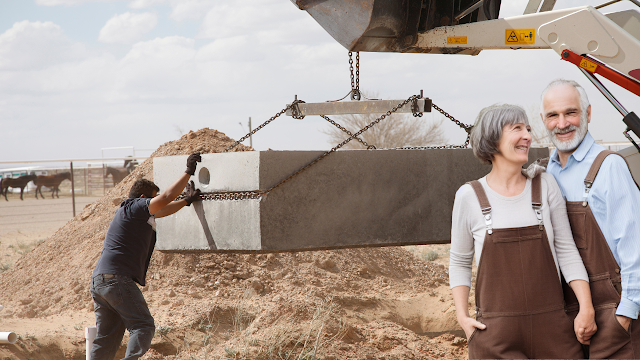 |
| Septic Tank Installation and Maintenance-Concrete Septic Tank |
This guide provides detailed information on proper septic tank installation, maintenance, and troubleshooting. Discover how to ensure the longevity and efficient functioning of your septic system.
Introduction
A septic tank is an essential component of any property that is not connected to a public sewer system. It provides a way to treat and dispose of wastewater from the property safely and proper installation and maintenance of a septic system are essential to prevent environmental contamination ensure proper functioning, and save money in the long run. This guide will provide a detailed look at proper septic tank installation maintenance and troubleshooting to help you keep your septic system running smoothly for years to come.
Our guide to proper septic tank installation and maintenance with all our extensive experience in the septic tank industry (40 years ) my wife Jeane and I are experts in all aspects of septic system care. We're here to provide you with a comprehensive guide that covers everything you need to know about installing and maintaining a septic tank. From choosing the right system to advice on the proper maintenance techniques you need to be using. We'll help you ensure that your septic system stays in tip-top shape. So if you're looking to make sure your septic system's performance keeps going with no problems read on for our ultimate guide to proper septic tank installation and maintenance.
 |
| Septic Tank waiting to be installed in the ground |
Importance of Proper Septic Tank Installation
Proper septic tank installation is crucial to prevent environmental contamination and ensure proper functioning. A poorly installed septic tank can leak and contaminate the surrounding soil and water sources, leading to environmental damage and health risks. Additionally, a poorly installed septic tank can cause wastewater to back up into the property or cause the tank to overflow, leading to a host of problems. Proper installation ensures that the septic tank functions efficiently, which can save money in the long run by preventing costly repairs and replacements.
The Installation Process
 |
| craning a concrete septic tank |
Proper septic tank installation involves several steps, including obtaining the necessary permits and approvals, determining the tank size, choosing a suitable location, excavating the site, installing the tank and drain field, and backfilling the site. Each step requires careful consideration to ensure that the septic system functions efficiently and effectively.
Permits and Approvals
Before installing a septic system, it is essential to obtain the necessary permits and approvals from your local government. This ensures that the septic system is installed according to local regulations and codes. Failure to obtain the necessary permits and approvals can result in costly fines and penalties.
Determining the Tank Size
The size of the septic tank depends on several factors, including the size of the property, the number of people living or working on the property, and the expected water usage. An accurate assessment of the property's water usage is crucial to determine the appropriate tank size. A septic tank that is too small can cause wastewater to back up into the property, while a septic tank that is too large can lead to inefficient operation and increased costs.
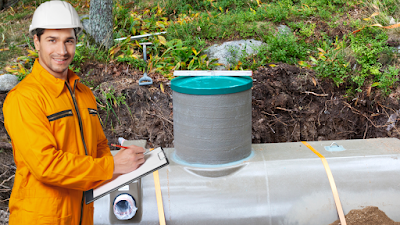 |
| checking on installation of septic tank |
Choosing a Suitable Location
The location of the septic tank is essential to ensure proper functioning and prevent environmental contamination. The septic tank should be located in an area that is easily accessible for maintenance and not prone to flooding. It should also be located away from any wells or water sources to prevent contamination.
Excavating the Site
The site must be excavated to make room for the septic tank and drain field. Excavation must be done carefully to ensure that the soil is not disturbed, which can affect the septic system's functioning. It is essential to hire a licensed professional to handle excavation to ensure that it is done correctly.
 |
| Most excavation for septic tank installation requires a digger |
Installing the Tank and Drain Field
The septic tank is installed in the excavation site and connected to the property's plumbing system. The drain field is then installed around the septic tank to allow wastewater to filter into the soil. The drain field must be designed and installed correctly to ensure that the wastewater is properly treated and filtered.
Backfilling the Site
The site is backfilled with soil, and the area is restored to its original condition. Proper backfilling ensures that the septic system is protected from damage and functioning correctly. Any excess soil must be removed from the site to prevent soil compaction, which can affect the septic system's functioning.
Septic Tank Maintenance
Proper maintenance is crucial to ensuring the longevity and efficient functioning of a septic tank. Regular maintenance includes regular pumping, avoiding flushing non-biodegradable items, conserving water, inspecting regularly, and monitoring the drain field.
Regular Pumping
The septic tank should be pumped every 3-5 years, depending on the tank's size and the number of people living or working on the property. Regular pumping ensures that the septic tank does not become overloaded and functions efficiently.
Avoid Flushing Non-Biodegradable Items
Items such as paper towels, diapers, and feminine hygiene products should never be flushed down the toilet as they can clog the septic system. Non-biodegradable items can cause blockages in the system, leading to inefficient operation and costly repairs.
Conserve Water
Conserving water can help reduce the strain on the septic system and prevent overflow. Simple steps such as fixing leaky faucets, taking shorter showers, and using a low-flow toilet can significantly reduce water usage and prolong the life of the septic system.
Inspect Regularly
The septic system should be inspected regularly for any signs of damage or wear and tear. An inspection should be carried out by a licensed professional to ensure that any problems are identified and addressed promptly.
Monitor the Drain Field
The drain field should be monitored regularly to ensure that it is functioning correctly. Signs of a problem with the drain field include wet spots, pooling water, and foul odors. Any problems with the drain field should be addressed immediately to prevent damage to the septic system and the surrounding environment.
Troubleshooting
If you notice any of the following signs, it may indicate a problem with your septic system:
Foul Odors
Foul odors emanating from the septic tank or drain field could indicate a problem with the system. The smell may be caused by a leak, overflow, or clog in the system. If you notice a foul odor, it is essential to contact a licensed professional immediately.
 |
| if you do not keep up maintenance on your septic tank |
Slow Draining
If sinks and toilets are slow to drain, it may indicate a clog in the septic system. A clog can be caused by non-biodegradable items, excessive use of water, or damage to the septic system. A licensed professional can help identify and address the problem.
Wet Spots
Wet spots or pooling water around the septic tank or drain field may indicate a leak. Leaks can be caused by damage to the septic system, which requires immediate attention to prevent environmental contamination and costly repairs.
Septic Tank Alarm
Many septic systems are equipped with an alarm that alerts the property owner when the system is not functioning correctly. If the alarm sounds, it is essential to contact a licensed professional immediately to address the problem.
Gurgling Pipes
Gurgling pipes can be a sign of a clog or blockage in the septic system. Gurgling pipes may be accompanied by slow draining and foul odors. A licensed professional can help identify and address the problem.
High Water Levels
High water levels in the septic tank may indicate a clog or blockage in the system. High water levels can cause the septic tank to overflow, leading to environmental contamination and costly repairs. A licensed professional can help identify and address the problem.
FAQs
Q: Can I install a septic tank myself?
A: Septic tank installation is a complex process and should only be carried out by a licensed professional.
Q: How often should a septic tank be pumped?
A: Septic tanks should be pumped every 3-5 years, depending on the size of the tank and the number of people using it.
Q: What should I do if I notice a problem with my septic system?
A: Contact a licensed professional immediately to inspect and repair any issues with your septic system.
Q: How can I prevent septic system problems?
A: Regular maintenance, conserving water, and avoiding flushing non-biodegradable items can help prevent septic system problems.
Q: What is the lifespan of a septic system?
A: The lifespan of a septic system can vary depending on factors such as maintenance, usage, and soil conditions. A well-maintained system can last up to 25-30 years or longer.
Q: Can a septic system be installed in any type of soil?
A: No, a septic system should be installed in soil that is well-draining and not too compact. Soil types such as clay and heavy silt can hinder proper drainage and cause problems with the septic system.
Q: Can a septic system handle household chemicals and cleaners?
A: No, household chemicals and cleaners should not be flushed down the drain or into the septic system. These chemicals can harm the beneficial bacteria in the septic tank that break down waste.
Q: What should I do if I plan to sell my property with a septic system?
A: It's essential to have the septic system inspected and pumped before selling the property. This ensures that the system is functioning correctly and prevents any issues from arising during the sale process.
Q: What is a septic system inspection?
A: A septic system inspection is a comprehensive assessment of the septic system's functioning and condition. It includes checking the tank's condition, assessing the drain field, and inspecting the plumbing system.
Q: How much does it cost to install a septic system?
A: The cost of installing a septic system varies depending on several factors, such as the size of the property, the soil conditions, and the type of system installed. On average, the cost can range from $3,000 to $10,000.
Q: How do I know if my septic system needs to be pumped?
A: If you notice slow draining, foul odors, or pooling water around the septic tank or drain field, it may indicate that the septic tank needs to be pumped.
Conclusion
Proper septic tank installation and maintenance are essential to ensure the longevity and efficient functioning of a septic system. By following the guidelines outlined in this article, you can ensure that your septic system functions efficiently and effectively for years to come.
Remember to obtain the necessary permits and approvals before installation, choose a suitable location, and have the tank installed and maintained by a licensed professional.
Regular maintenance and monitoring can help prevent problems, and addressing any issues immediately can save you money in the long run. With proper installation and maintenance, a septic system can provide reliable and efficient wastewater treatment for your property for many years.
.png) |
| Jeane and Michael Sadler The Septic Tankers |
Research and Fact Check:
BLOG POSTS
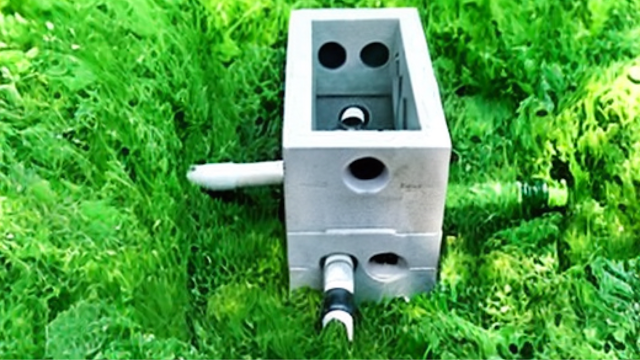

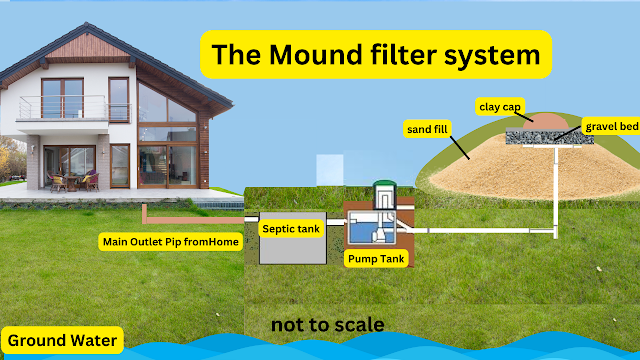
.png)

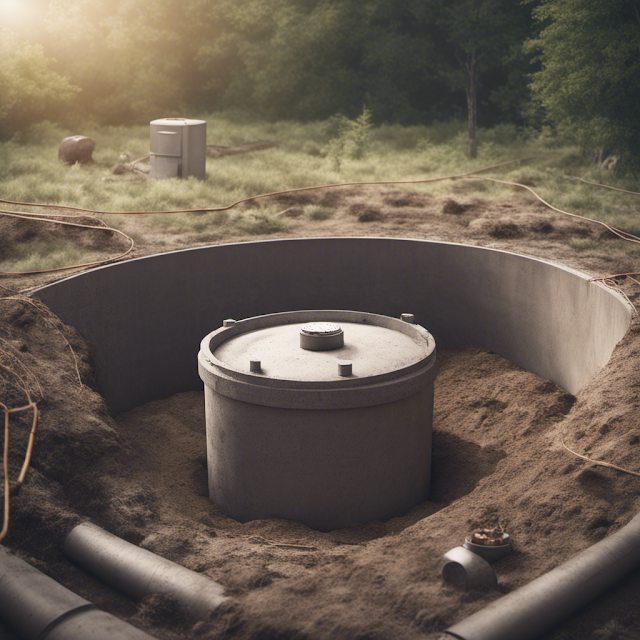
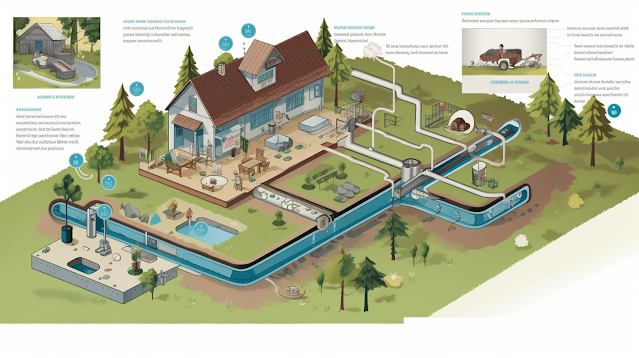


Comments
Post a Comment